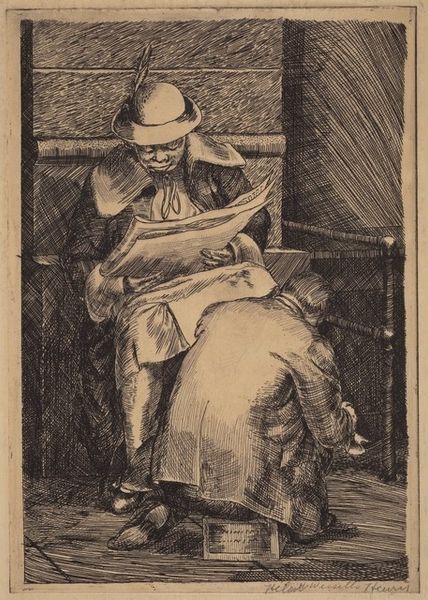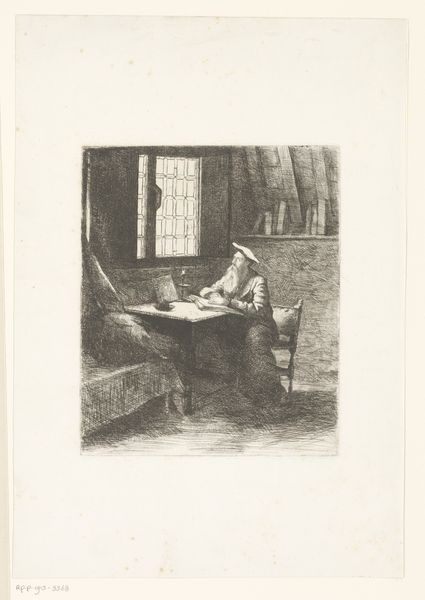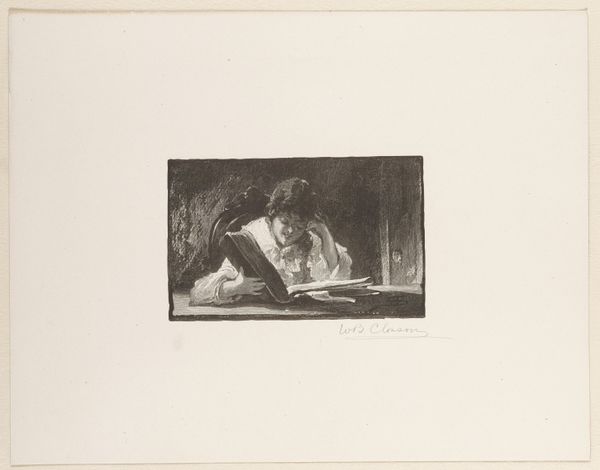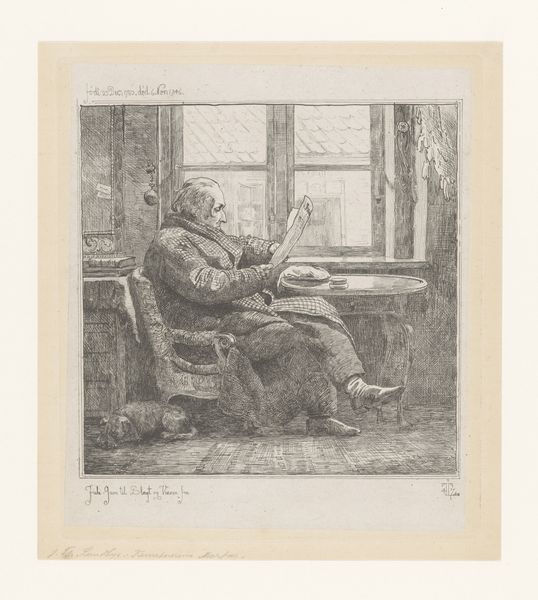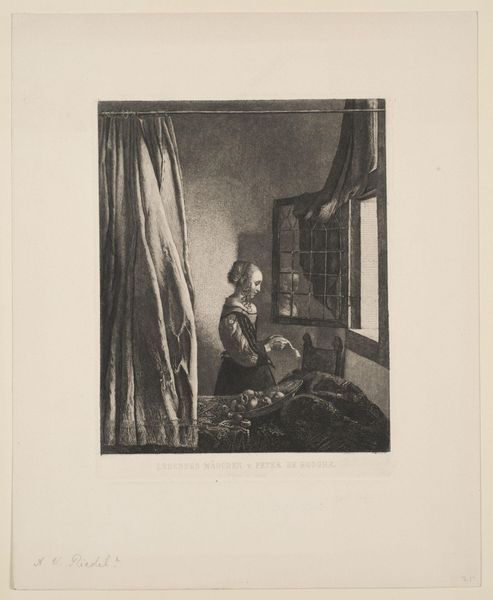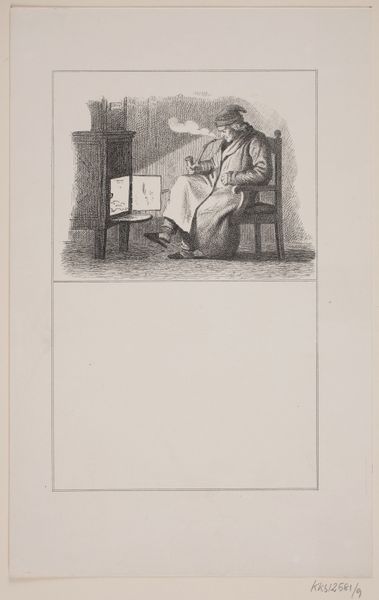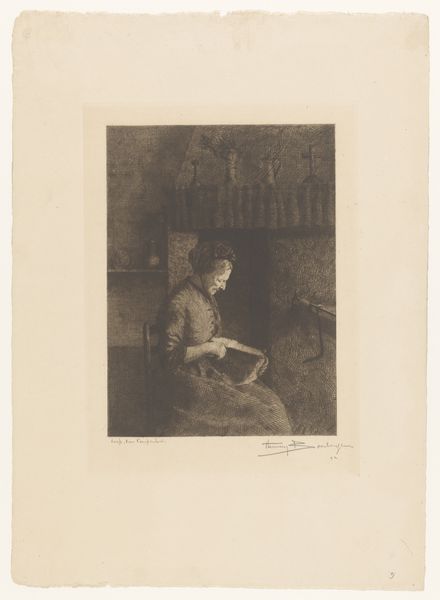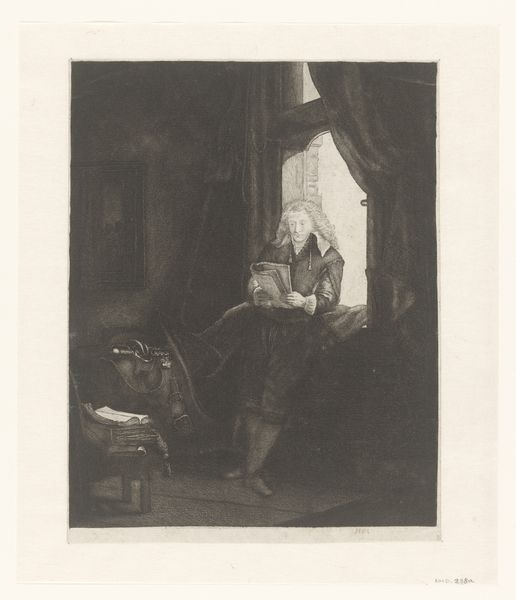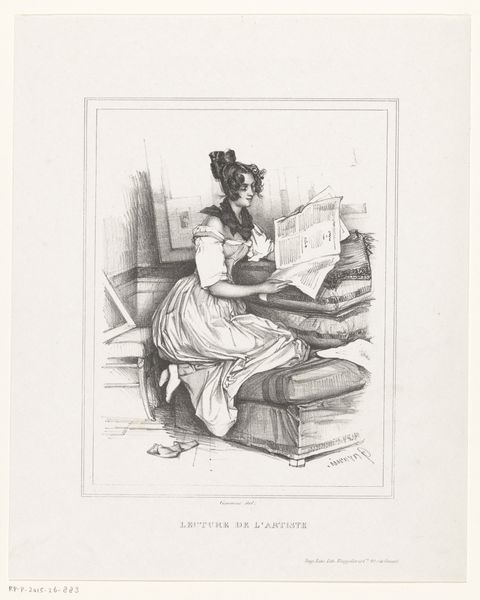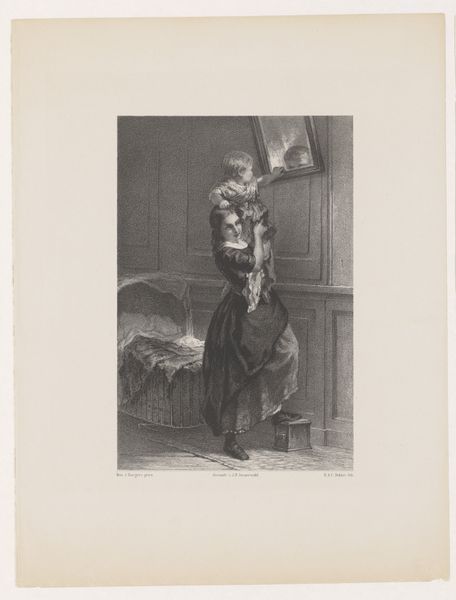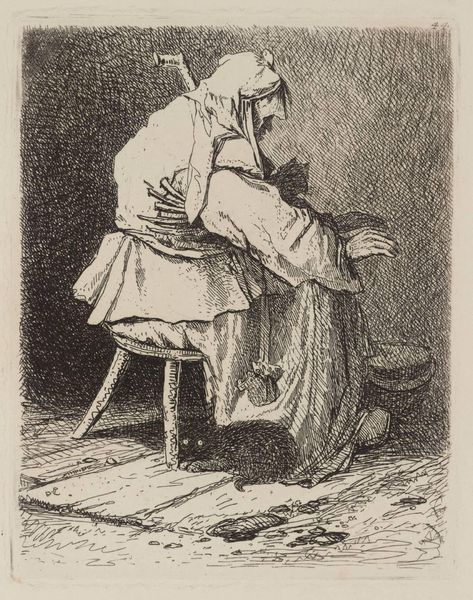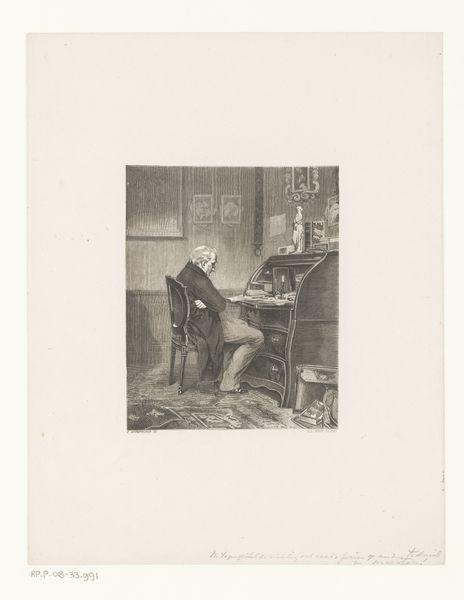
Dimensions: height 320 mm, width 241 mm
Copyright: Rijks Museum: Open Domain
Editor: So, here we have "Lezend meisje op een sofa," or "Reading Girl on a Sofa," created sometime between 1870 and 1913 by Bramine Hubrecht. It’s an etching, a type of print, and what strikes me first is how the lines create such a sense of texture, especially on the sofa. What’s your take on it? Curator: I’m immediately drawn to the process of its making, particularly the choice of etching. The artist meticulously uses acid to corrode lines into a metal plate, translating to a readily-available image. Consider the materiality of the print itself – paper, ink, metal – materials that were becoming increasingly mass-produced during that period. How does this accessibility, facilitated by these material choices, potentially democratize art consumption in the late 19th century? Editor: That's an interesting point. I was focusing on the subject, this solitary woman reading, and missed the larger implications of the printmaking process itself. But was art like this truly reaching a broader audience back then? Curator: It’s a question of distribution and consumption. Were these prints meant for a burgeoning middle class, a segment of society gaining disposable income and access to education, or a more traditional patronage system? Let's also consider the labor involved, the etching process itself, and how that labor is valued – both artistically and economically. Were these prints valued and collected at the time as more accessible or viewed differently compared to paintings? Editor: So it's not just about *what* the image depicts, but *how* it was made and who had access to it. I never really thought about that before in such specific terms. Curator: Exactly. Think about the means of production: the exploitation or empowerment afforded to artists. The production process directly shapes meaning. Editor: I'm going to look at all art differently now. Thanks for sharing that insightful perspective. Curator: My pleasure. Art is made, after all. We should always think of it as a produced material in a world shaped by economies and labor practices.
Comments
No comments
Be the first to comment and join the conversation on the ultimate creative platform.
